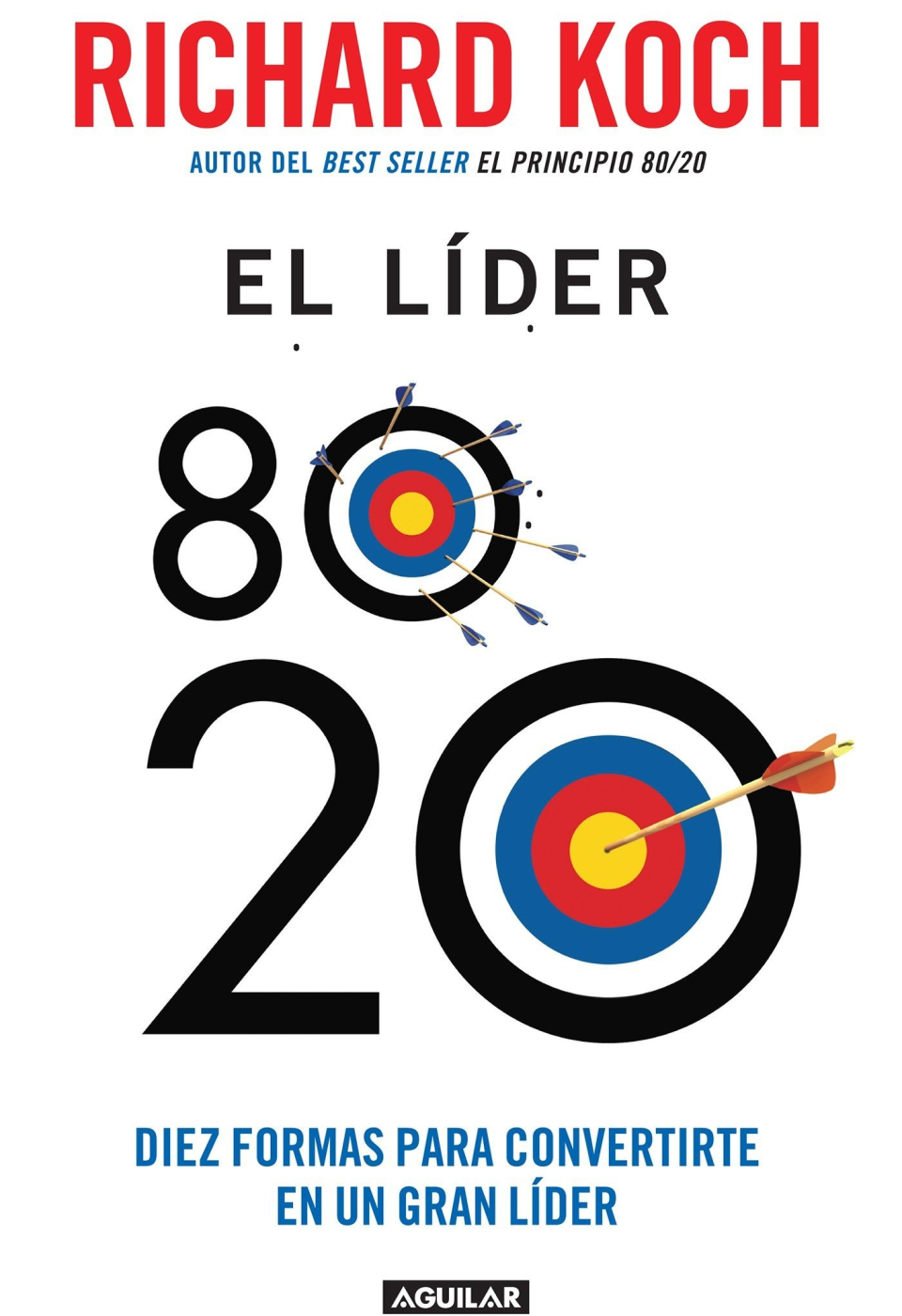Book "The 80/20 Principle".
In 1887 Wilfredo Pareto, a renowned economist, was looking for patterns of wealth and income in 19th century society. In his study he was able to conclude that most of the income and wealth went to only a small percentage of society. In the study he found that there was a mathematical relationship between the percentage of people and the percentage of wealth they possessed. What was most interesting about this study was that by comparing the distribution of wealth centuries ago, the same pattern emerged: 80% of the wealth had also belonged to 20% of the population.
A few years later it was discovered that this principle does not apply only to the distribution of wealth, but to many different situations such as business. It was first applied by Joseph Juran, an American engineer who in 1951 pioneered this concept by reducing the percentage of defective products produced by Japanese companies. Juran applied the Pareto principle as follows: 80% of defective products are only 20% of the causes, if we focus on looking for that 20% of the causes the problem will be solved to a large extent by applying this. Japanese companies had a substantial improvement in the quality of their products due to the success achieved by applying this principle. Juran arrives to the USA applying it in order to improve the operation of the companies.
As we can see this principle discovered by Pareto is not only applied to the distribution of wealth, but it was also applied to business and also to many other situations in life, for example, it is clear that approximately 20% of the people who drink liquor will drink 80% of the beer. In sales 20% of the salesmen will make 80% of the budget and so we could continue describing this same pattern with many other examples.
As we can see this principle discovered by Pareto is not only applied to the distribution of wealth, but it was also applied to business and also to many other situations in life, for example, it is clear that approximately 20% of the people who drink liquor will drink 80% of the beer. In sales 20% of the salesmen will make 80% of the budget and so we could continue describing this same pattern with many other examples.
Pareto Theorem
It says that 20% of your actions produce 80% of the results or to put it another way 80% of the effects come from 20% of the causes.
How to use the Pareto Theorem in our daily life?
It is very simple: you don't have to do everything, the only things you need to do are the things that give you results, for example, in a couple relationship, it is said that the quality of a relationship is directly proportional to the quality of the communication you have with your partner, it is also said that the longest lasting and happiest couple relationships are those that put more effort in the communication between the couple. This conclusion was reached because many husbands and wives when arriving home from a long day at work say that they talk to their spouse for about 3 hours, but during those 3 hours they were checking email, watching TV or checking their social networks. Now there are many other factors that contribute to having a successful relationship, but if you put more effort into developing better communication the relationship will benefit more and you will have a greater opportunity to improve in other areas. All that time you say you have been talking to your spouse can be perceived as a lack of interest in the other person; but if you change your perspective and focus on giving your partner 20 minutes of your undistracted attention that couple will be very successful in their future.
In short, it's not about doing everything well or about doing many things at the same time, the important thing is to do one thing very well that will give you 80% of the results.
Did you realize that we wear 20% of all our clothes 80% of the time or, what about your friends, did you realize that 80% of your time is spent with 20% of your friends?
Once I applied this concept unconsciously and it generated incredible results in the way I was able to learn the English language. During high school and college I took this subject, however, a large percentage of the classes were dedicated to grammar, while reading and writing were given less time, and listening was the least dedicated skill. During that period my grammar improved a lot, but it was impossible for me to understand a simple sentence in English; knowing this and feeling that I had not really advanced I dedicated myself to looking for podcasts in English where I could reduce my time studying grammar reading and writing, and focused solely on reinforcing my listening. By devoting at least an hour a day for a year my English improved substantially, which if I had continued to spend time on grammar would probably not have improved as much. I am not saying that grammatical knowledge is not important, it is fundamental, but if we take into account that 80% of spoken language uses less than 20% of the existing words in a language it will be better to shift your attention to listening to conversations and identifying the most common words; that is why a person living in an English speaking country can learn the language much faster, since he/she is exposed to spoken language at all times. Fortunately today we have the internet which for people who do not live in an English speaking country is a very useful tool.
In conclusion, you can spend your time in only 25% of the communicative skills and get approximately 80% of the spoken language, I am not saying that it works for everyone, but in my case it was a very useful strategy to learn English.
You can apply this rule in different areas of your life. Ask yourself what is that 20% of activities that bring you 80% of value to your life and start eliminating those that are not very important. Or if you have a business, focus your efforts to a greater extent on the 20% of customers that produce 80% of your income. Sometimes simplifying can be the path to greater success. You can also apply it personally by looking for the 20% of skills in which you consider yourself good at and focus on improving it every day, surely in a few years these skills will be the ones that will provide you with 80% of success in your life.
Tipping point
The idea is that when a business is in its initial stages a large amount of effort generates very few results, however, if the effort is constant and maintained over a longer period of time there will come a time when you cross that invisible line and from then on smaller efforts will produce incredible results. For example, imagine that you start a business at the beginning very few people know you, your customers are only a few people you know. It is during this stage of your business that you have to invest in advertising, advertise your products, look for contacts, ... The work in this phase of your business is very hard and the results are not yet very good, but over time your customers, knowing that your product is good, begin to recommend you to new people and so you are forming a network. Once you have consolidated a wide network of customers you will be crossing the famous tipping point and from there your business will begin to produce results exponentially. If your business has grown sufficiently you will be able to do in just one month what you did for maybe 3 years of hard work and now only 20% of effort can produce results that you never imagined possible before.
This last example is just an invitation to work for your goals and not to give up when, despite all the effort you do the results do not appear, if you are forming a solid foundation the time will come when you cross that invisible line and your results will then be incredible.
It is true that you must simplify your work by applying the Pareto principle, but it is also true that sometimes an extra effort is necessary to apply this principle correctly.
I have also been in the place you are now. When I started with my dream of starting my own Medical Clinic and I was the Executive Director, I did not know how to fulfill my responsibilities at work and be present at home with my family at the same time. However, after making changes in my productivity, goal setting and leadership, I was able to take my company forward through an economic recession the country was in and achieve positive results; all while being home in time to have dinner with my family every night.
I now teach the same principles that helped my leadership, along with my team, here at CIME Academy.
If you want to know more about our training proposal in aesthetic medicine, we encourage you to contact us. We will solve your doubts and advise you on what you need.
Dr. Manuel Rubio Sanchez
aesthetic doctor




